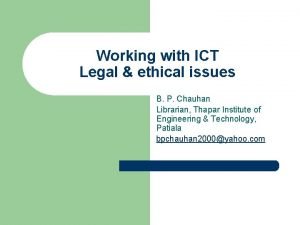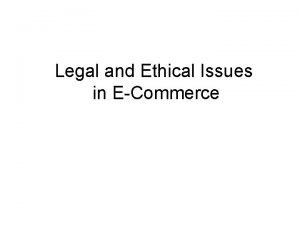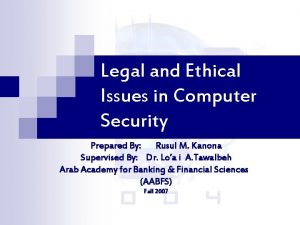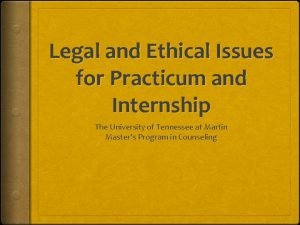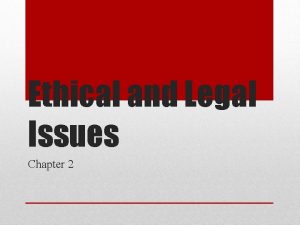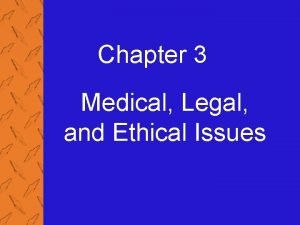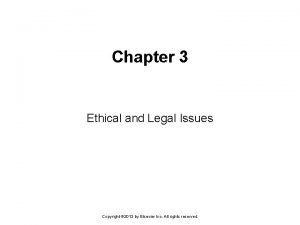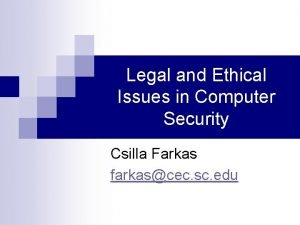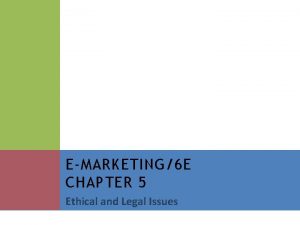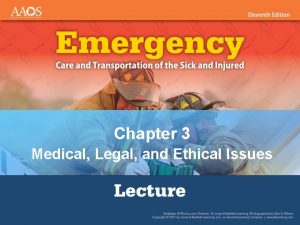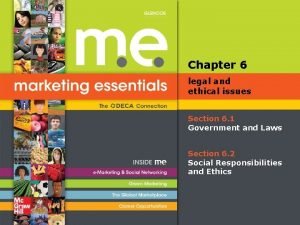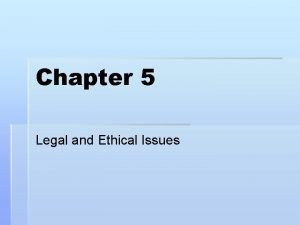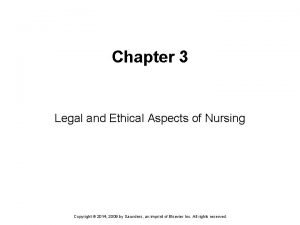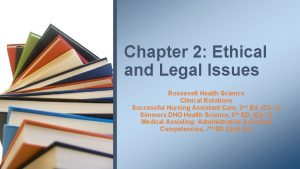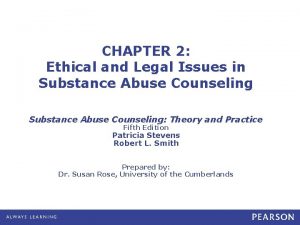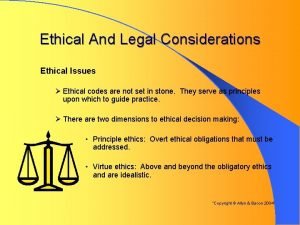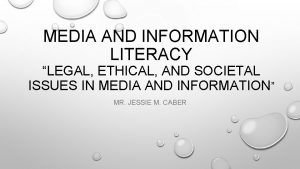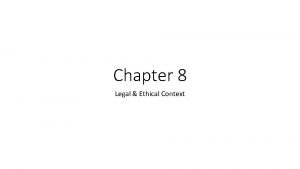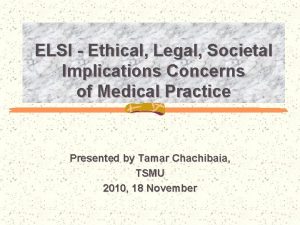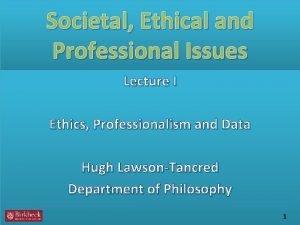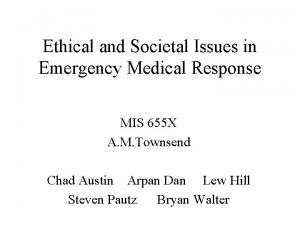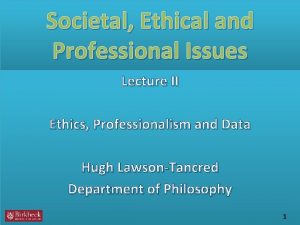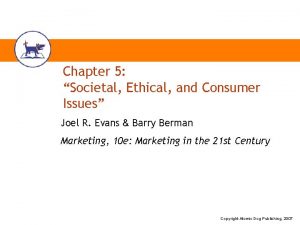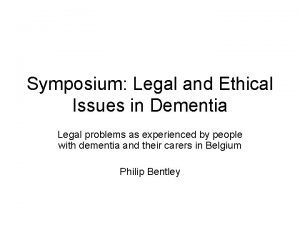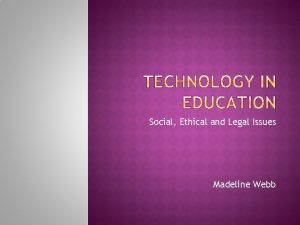Legal Ethical And Societal Issues In Media And

















- Slides: 17

Legal , Ethical And Societal Issues In Media And Information

What is Plagiarism?

According to the Merriam-Webster online dictionary, to "plagiarize" means: Ø to steal and pass off (the ideas or words of another) as one's own Ø to use (another's production) without crediting the source Ø to commit literary theft Ø to present as new and original an idea or product derived from an existing source

Types of Plagiarism (Sources Not Cited)

The ghost writer The writers turns in another work , word -for-word, as his or her own.

The photocopy The writers copies significant portions of text straight from a single sources, without alteration

The potpluck paper The writers copies from several different sources, tweaking the sentences to make them fit together while retaining most of the original phrasing

The Poor Disguise The writer has altered the papers appearance slightly by changing key words and phrases

The Labor Of Lazyness The writer takes the time to paraphrase most of the paper from other sources and make it all fit together

The Self-Stealer The writer “borrows” generously from his or her previous work

Types of Plagiarism (Sources Cited But Still Plagiarize)

The Forgotten Footnote The writer mentions an author’s name for a source, but neglects to include specific information on the location of the material referenced

The misinformer The writer provides inaccurate information regarding the sources, making it possible to find them

The Too-Perfect Paraphrase The writer properly cites a sources, but neglects to put in quotation marks on text that has been copied word-for-word, or close to it.

The Resourceful Citer The writer properly cites all sources, paraphrasing and using quotations appropriately. The catch? The paper contains almost no original work!!

The Perfect Crime The writer properly quotes and cites sources in some places, but goes on the paraphrase other arguments from those sources without citation

Sources: https: //www. slideshare. net/arnielping/understandingpropaganda-in-the-digital-world-67804796 http: //www. merriam-webster. com/dictionary/plagiarism
 Legal and ethical issues in media
Legal and ethical issues in media Law and ethics in information security
Law and ethics in information security Legal and ethical issues in use of ict
Legal and ethical issues in use of ict Legal and ethical issues of e commerce
Legal and ethical issues of e commerce Legal and ethical issues in computer security
Legal and ethical issues in computer security Ethical and legal issues involved in practicum
Ethical and legal issues involved in practicum Chapter 2 ethical and legal issues
Chapter 2 ethical and legal issues Medical legal and ethical issues chapter 3
Medical legal and ethical issues chapter 3 Chapter 3 legal and ethical issues
Chapter 3 legal and ethical issues Attack sophistication vs intruder technical knowledge
Attack sophistication vs intruder technical knowledge Legal and ethical issues chapter 5
Legal and ethical issues chapter 5 Legal and ethical issues chapter 3
Legal and ethical issues chapter 3 Chapter 6 legal and ethical issues
Chapter 6 legal and ethical issues Chapter 5 legal and ethical responsibilities
Chapter 5 legal and ethical responsibilities Legal and ethical aspects of nursing chapter 3
Legal and ethical aspects of nursing chapter 3 Chapter 2 ethical and legal issues
Chapter 2 ethical and legal issues Ethical and legal issues chapter 2
Ethical and legal issues chapter 2 Chapter 5 legal and ethical issues
Chapter 5 legal and ethical issues


